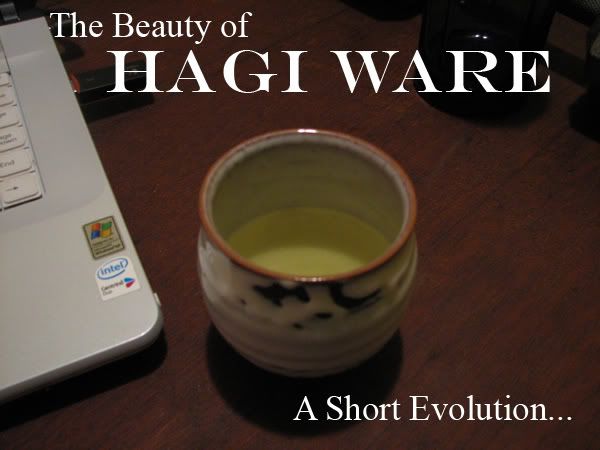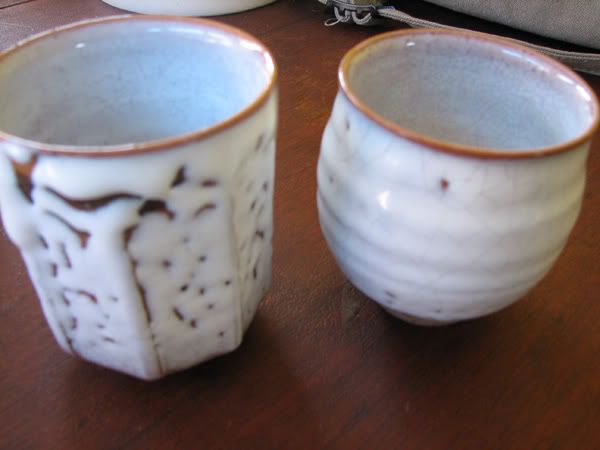
I've really come to love Hagi ware. It's greatest attribute is that it progresses over time, absorbing the tea you drink in it and adopts its own unique character. This article will focus solely on white-glazed Hagi.
This is a selection from Magokorodo on the unique quality of Hagi:
"The big feature of Hagi ware is in the softness and water absorptivity of the ground baked thoroughly. With the climbing kiln, in order to burn slowly with the degree of low fire for a long time, the feel of a product is soft, and since the ground is seldom burning and waiting, it has moistness heavily. Furthermore, since there is a water absorptivity, while using for years, tea and alcohol permeate and the color of a teacup changes, and among masters of the tea ceremony, it is called "CHA NARE (tea tameness)", and is treasured."
These characteristics reveal themselves quickly, and recently I acquired my second Deishi Sibuya tea cup, so I decided to make a small presentation on the transformation of this cup over a short number of drinkings.
To begin, and make clear, an unused Hagi piece is completely white all around, aside from areas where the glaze runs thin and one can see the brownish hue of the pottery underneath. Here are my 2 Hagi tea cups - these are pictures by the vendor:
Deishi Cup 1
Deishi Cup 2
Here is my own picture of the cup that I will use to show the progression. This was after the first cup of tea, and already one change has taken place, though small. There is a thin darkened area on the unglazed area where it meets the glaze:
The Cup
This following picture was taken after the 2nd or 3rd brewed pot.
Already, there are cracks forming on the outer walls of the cup. I only bothered to take this picture at this stage, since no other changes were visible:
Beginning Cracks Are Now Visible
The following pictures are what the cup now currently looks like, after around 5-8 pots of tea. The crackling on the outside is much more abundant and noticeable. The inside has begun to form cracks, but they tend to be much smaller and closer together. On the unglazed area, tea has absorbed and the pottery takes on a dark green tint, thought not completely uniform (whether this will be the case after hundreds of brewings, I cannot say):
The Outer Surface
The Inner Surface
The Unglazed Bottom
And here are a couple pictures of my first Hagi cup, which has seen more use. The bottom part shows why (I assume) Deishi will often have the glaze thin out on most of his cups, closer to the bottom normally. The thinner the glaze, the larger proliferation of cracking will occur. And in the case of the bottom inside of the cup, greater absorption of tea, causing coloration (though the swirl is the pottery, where the glaze is thin):
Outside Bottom of Older Cup
Inside Bottom of Older Cup
And there you have it, the charm of Hagi ware. A piece of pottery that will change and evolve as you drink with it. They are among my favorite cups to use, not only for their elegant beauty, but also for that extra dimension of evolution, which is at the heart of the beauty.

Edit: Gyokuro was drunk from both these cups, and maybe the occasional Kukicha serving for the older cup...regardless, these cups have only seen green tea in them.


